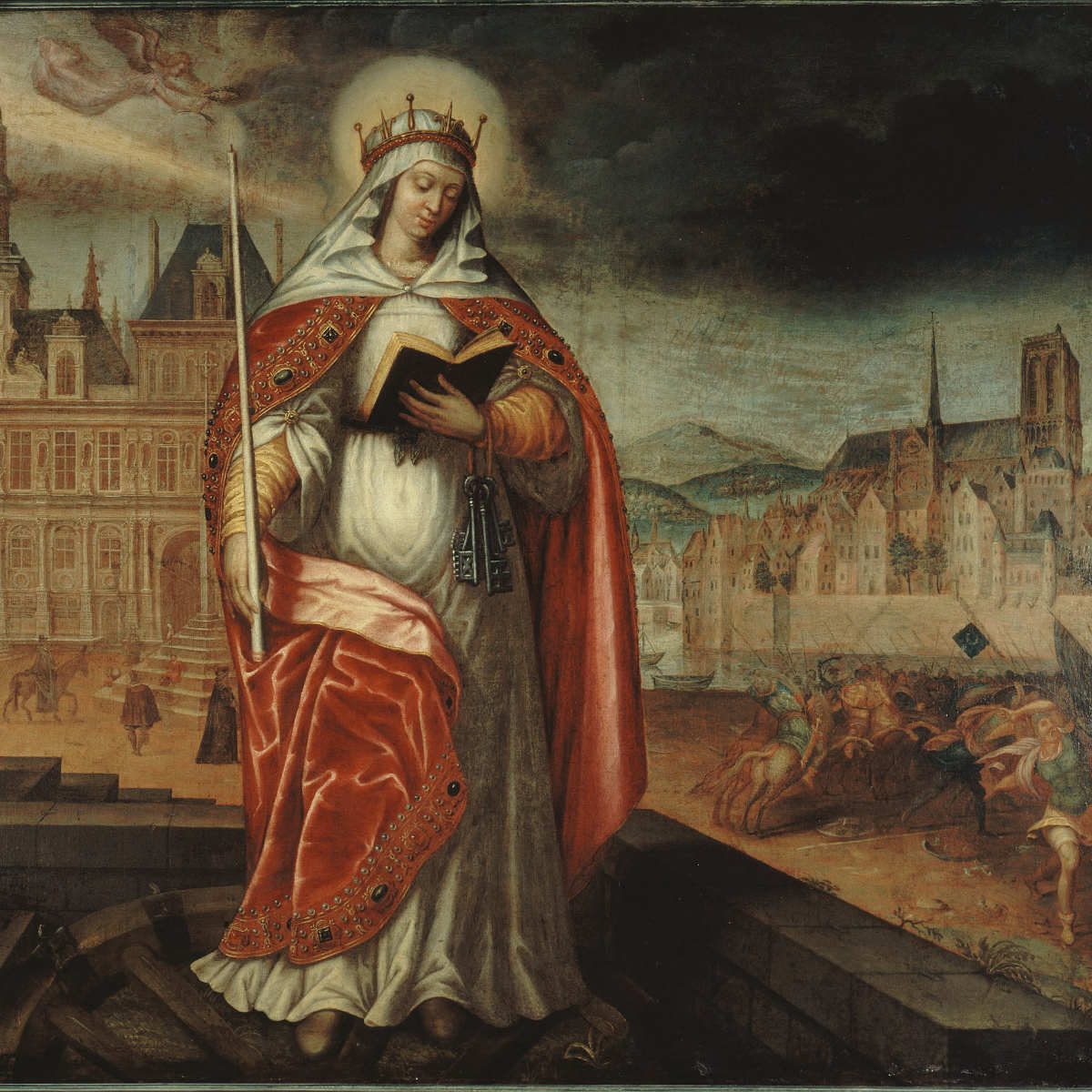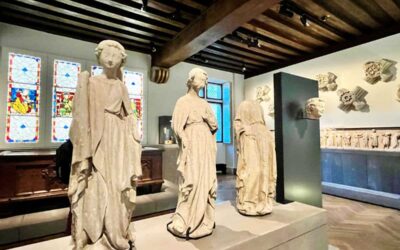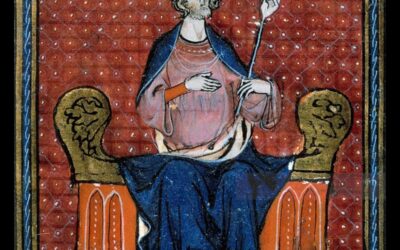During the 5th century, there lived a woman named Genevieve who would change the course of the history of the city of Paris. And far from being a royal or noblewoman, this woman was a commoner.
It was the era when the Roman empire was gradually decreasing in influence and a new power, the Franks (a Germanic tribe) were on the rise. Along with change comes turmoil, and it was to Genevieve who everyone would turn to.
Without ever picking up a sword, she managed to keep local Parisians safe, long enough to negotiate peace. And it was Saint Genevieve who managed to influence the King of the Franks to make Paris his capital, over other cities like Lyon that were bigger at the time.
So let’s find out how the remarkable Genevieve became the patron saint of Paris, from her personal life, her achievements, and more. Allons-y!
| Quick facts | |
|---|---|
| Birth: | around 422 AD in Nanterre (town just outside Paris) |
| Death: | around 512 AD at around age 89, in Paris |
| Parents: | Severus and Gerontia, who were possibly of Frankish origin |
| Marriage and kids: | None |
| Famous for: | saving Paris from the Huns and becoming the Patron saint of Paris |
1. She was born in 422AD in Nanterre.
Genevieve was born around 422AD in Nanterre, which then was a Roman colony just outside Paris.
Her background is not entirely clear, but she is believed to have been the only daughter of a man named Severus. He was a Romanized Frank officer and member of the local municipal council, a position of some power. The details of her mother are not known.
Legend has it that young Genevieve was noticed by Saint Germain of Auxerre and Saint Loup of Troyes at the age of 10. They were passing through Nanterre on their way to Brittany (which was then part of the Kingdom of Britain) around 430.
They told her parents she would become very devout and she took that to heart, dedicating herself to God.
2. She became a nun at 15 years old.
At 15 years old, Genevieve decided to dedicate herself to God and become a nun. On the death of her parents around 440, she left Nanterre and settled with her godmother in the heart of Paris, on the Île de la Cité.
The Bishop of Paris appointed her to look after the welfare of the other Consecrated virgins, and she led them to a high degree of sanctity.
3. She had visions from God.
Genevieve was thought to have visions from God and was a devout Catholic. She reported her visions and prophecies, which did not please everyone.
When some fearful locals conspired to drown her in a lake, it was only through the intervention of Saint Germain d’Auxerre, that she remained safe. She would slowly become renowned for her piety and her visions.
4. She led a prayer marathon against the Huns to save Paris.
In 451 AD, Paris was threatened by the army of Attila the Hun, which had pillaged Treves, Metz and Reims. Parisians were planning to abandon the city, but they were persuaded to resist by Geneviève who led a prayer-marathon to divert the Hun army.
When the Huns diverted to Orléans instead, Geneviève was proclaimed a heroine.
5. She negotiated with Childeric I during the siege of Paris.
When King Childeric I laid siege to Paris in 465AD, it was Genevieve who would negotiate on behalf of the city’s citizens and arrange for a ceasefire.
During subsequent attacks and sieges, it was Geneviève who would negotiate between the armies, reaching an uneasy peace with the Frankish King. However, when Childeric’s son Clovis acceded to the throne, he would make Genevieve his advisor and become one of her biggest supporters.
6. She was highly regarded by Clovis I.
During Genevieve’s lifetime, King Clovis I was building alliances and waging war in order to unite all the territories of Gaul (today known as France). He would become known as the first King of the France.
By the time Clovis and his wife, Queen Clotilde came to the throne, Genevieve was highly revered. Clotilde was a devout Christian herself, and a big supporter of Genevieve, extolling her virtues to Clovis as well as the local population.
Under Genevieve and Clotilde’s encouragement, Clovis built a church dedicated to Saints Peter and Paul that today bears the name of Montagne Sainte-Geneviève next to the Pantheon in the 5th arrondissement of Paris.
7. She advised King Clovis to make Paris his capital.

It is through the influence of Genevieve that Clovis I established Paris his capital in 508AD. At the time, most of the city’s settlement was on Ile de la Cité and its strategic location on the River Seine made it an ideal location for trade, as well as a good defensive position.
8. She died at the age of 89.
Genevieve died at the age of 89 in 512AD, with her longevity of life adding to her legend.
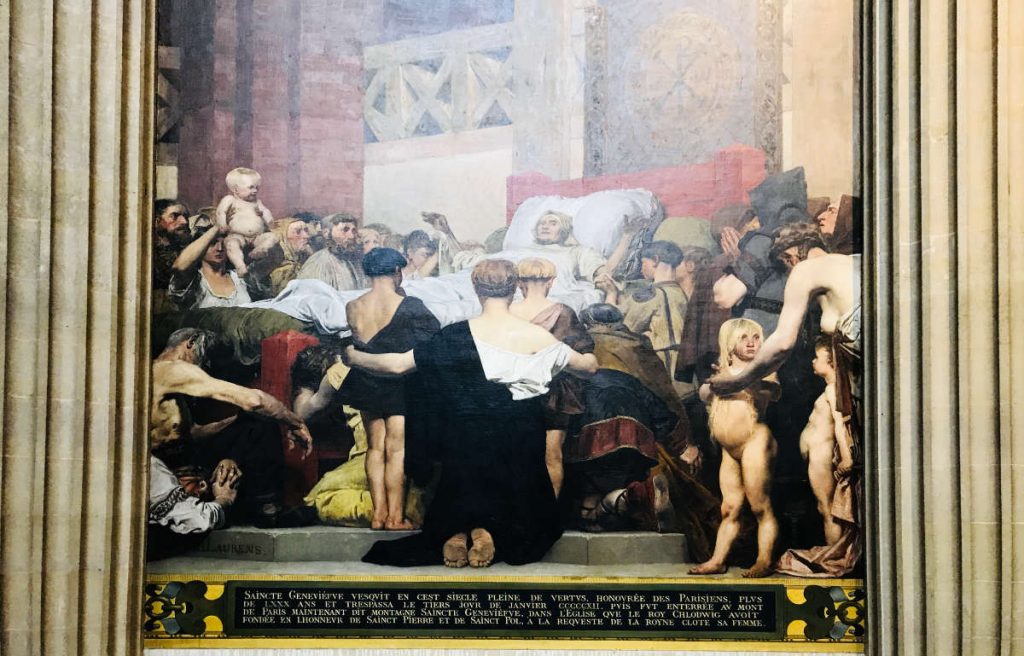
She was initially buried in an abbey that was specifically built by Clovis I for her, the Abbaye Sainte-Geneviève de Paris. Today, it is part of the famous Parisian high school Henri IV.
When Clovis I himself died, he arranged to be buried next to the tomb of Genevieve, along with his wife Clotilde. (However, Genevieve’s relics were pillaged several times and Clovis and Clotilde’s tombs have not been found.)
9. She was beatified as a saint.
It is not clear when she was beatified as it was done in the pre congregation period, likely by local bishops as a result of popular devotion. Nonetheless, she remains celebrated annually on the 3rd of January.
The sole source of historical information about her is a book called “Geneviève’s Vita”, a hagiographic biography probably written at the request of Queen Clotilde.
Clovis himself converted to Christianity a few years after Genevieve’s death, and his wife Clotilde was also later cannonized as a saint.
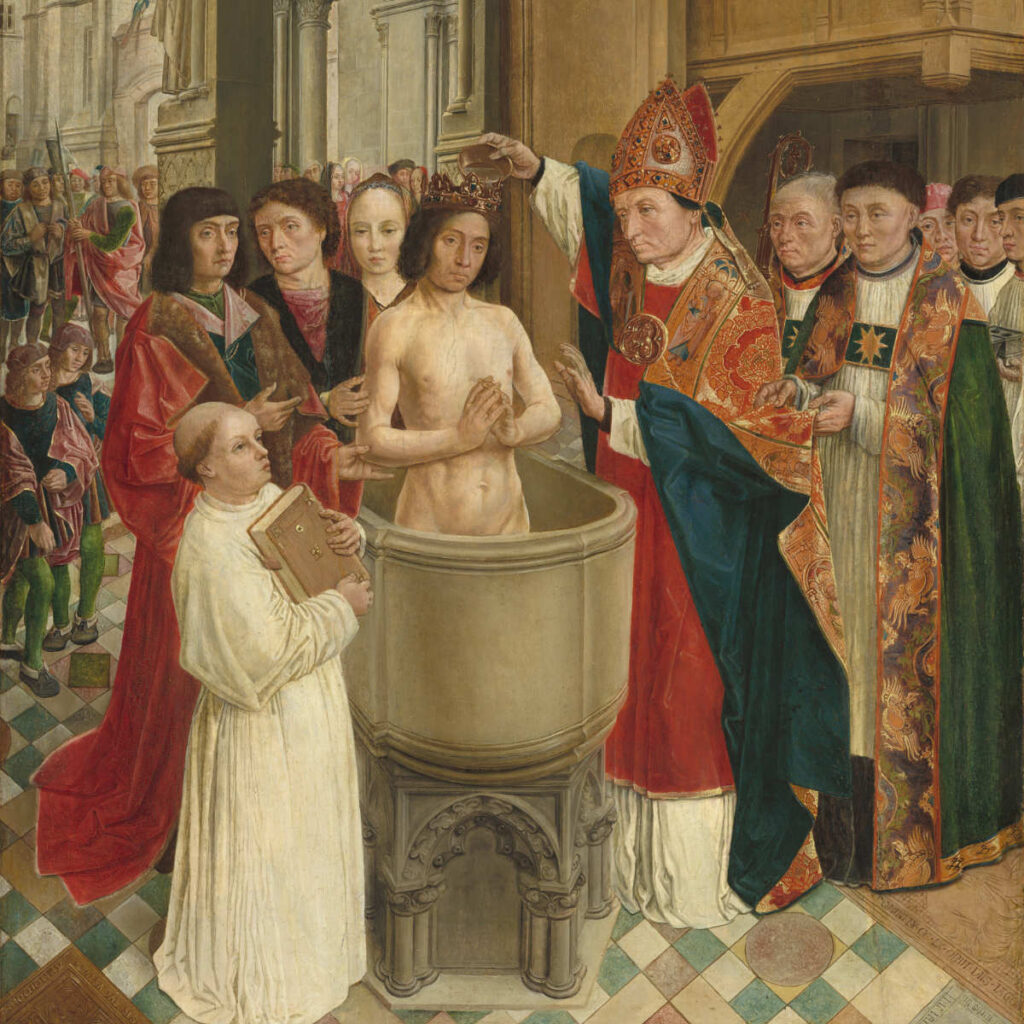
10. The Pantheon in Paris was supposed to be a temple dedicated to her.
The Panthéon in Paris was originally intended to be a temple dedicated to her. It had been commissioned by French King Louis XV, but by the time it was completed, the French Revolution had begun.

While the Pantheon ended up being converted into a tribute for the great thinkers and visionaries of France, there is a church dedicated to her in Paris.
☞ READ MORE: 32 Interesting facts about Paris
11. Her shrine is in a church on hill named Montagne Sainte-Geneviève.
Located on the Montagne Sainte-Geneviève next to the Panthéon, is the Saint-Étienne-du-Mont church which replaced an earlier church from the 5th century. The church is now dedicated to Saint Genevieve, and her shrine as well as a golden tomb to her can be found inside
According to tradition, Saint Geneviève used to come to this location to pray and taking a path that became rue de la Montagne-Sainte-Geneviève.
12. She is the patron saint of Paris.
She is recognized today as one of the official Patron saints of Paris, along with Saint Denis, Saint Marcel, and Saint Germain. There are statues of her in several locations around Paris, including one in the city’s town hall.
She is also the patron saint of the French National Gendarmerie, after the decree of May 18, 1962, signed by Pope John XXIII.

If you enjoyed that article, you may like to read more about other renowned female historical figures from France. A bientôt!
